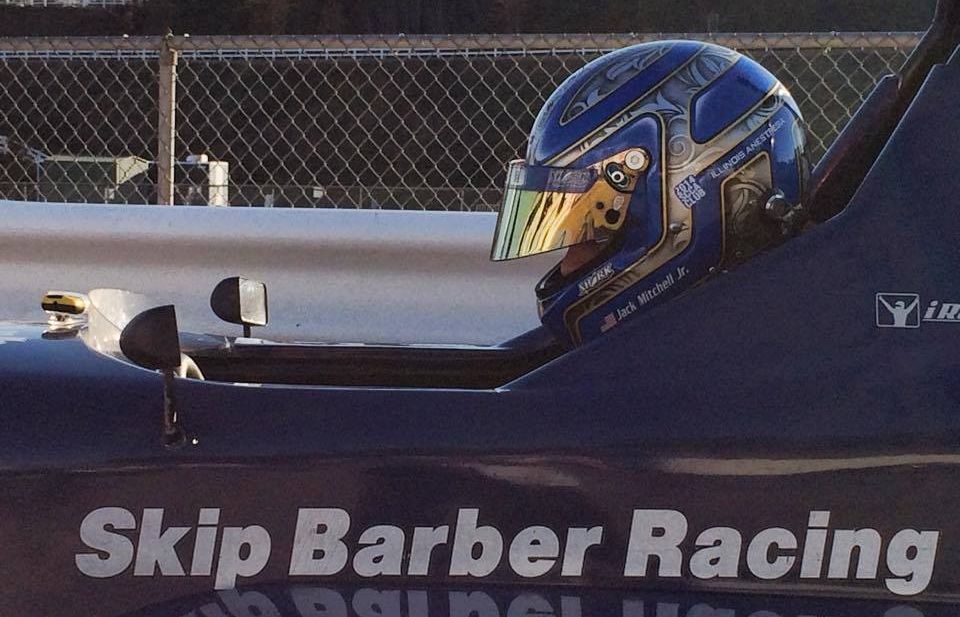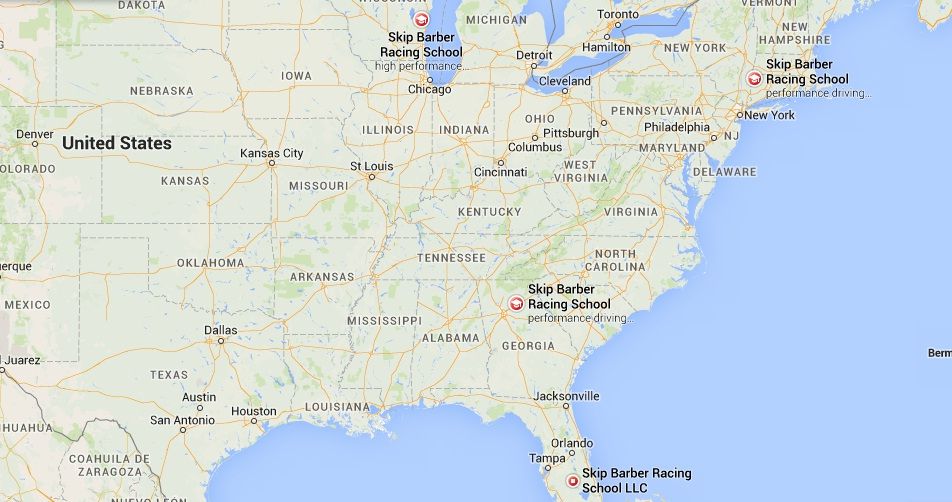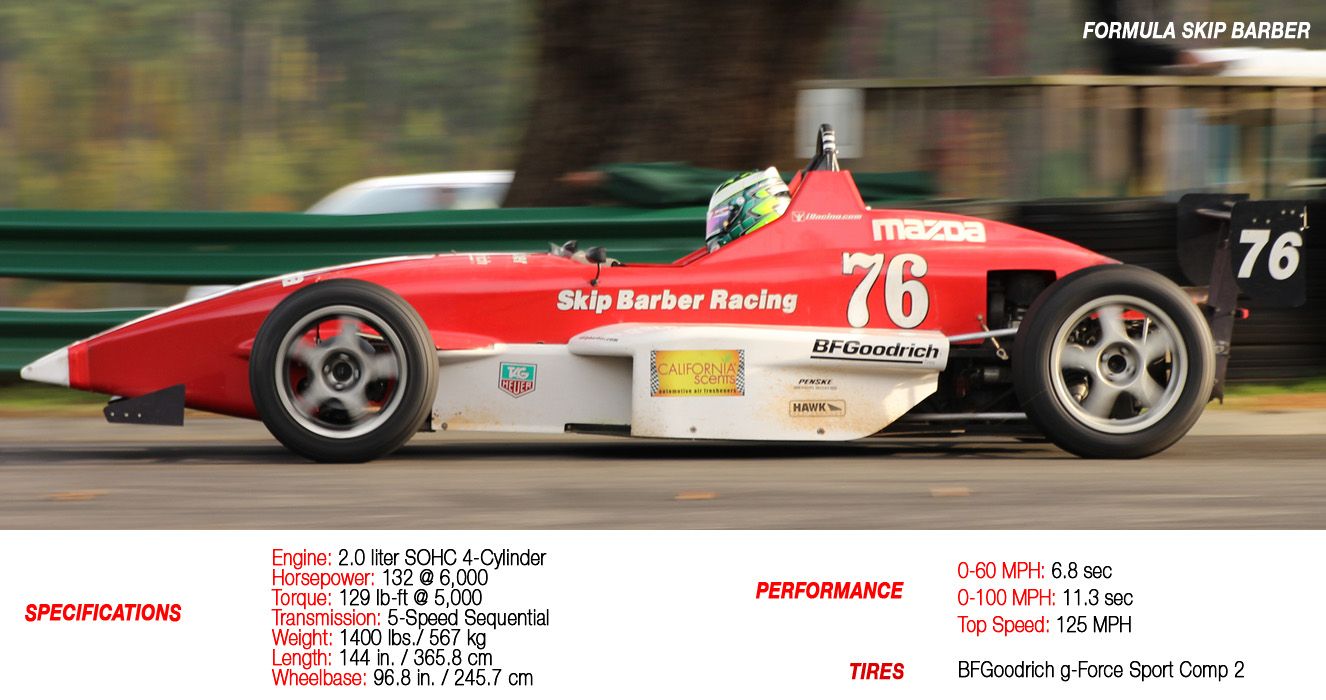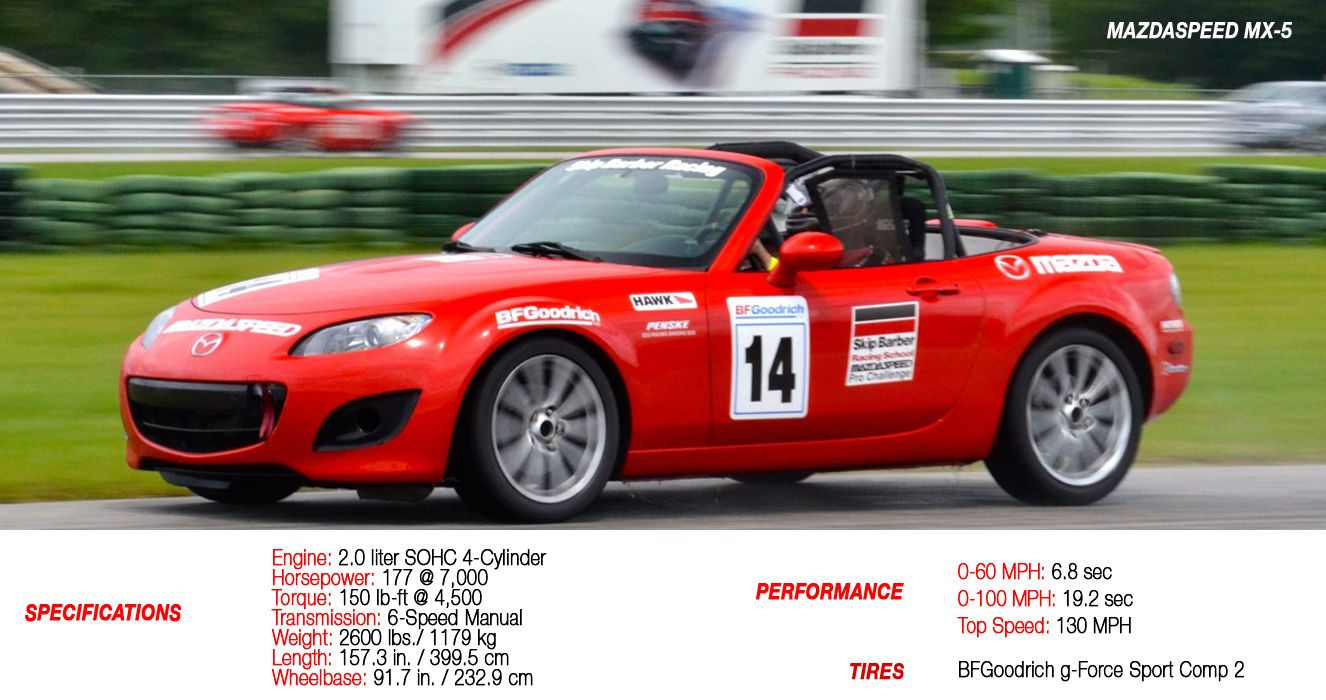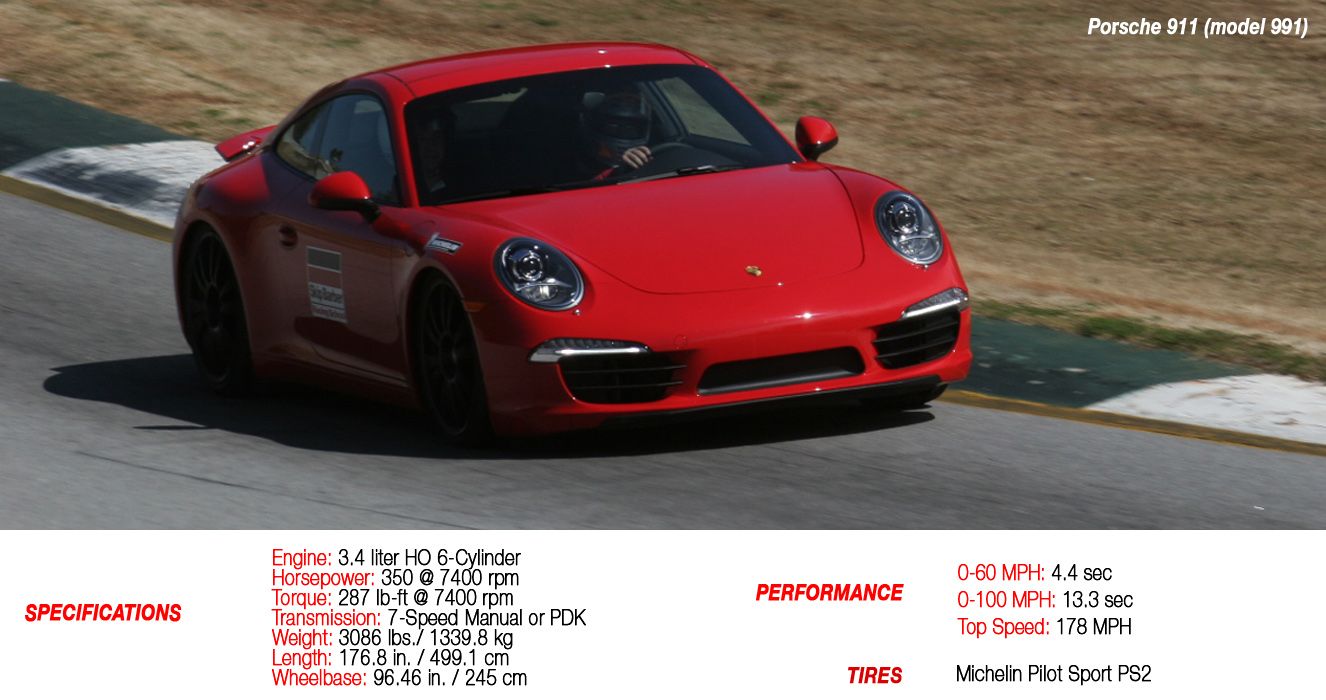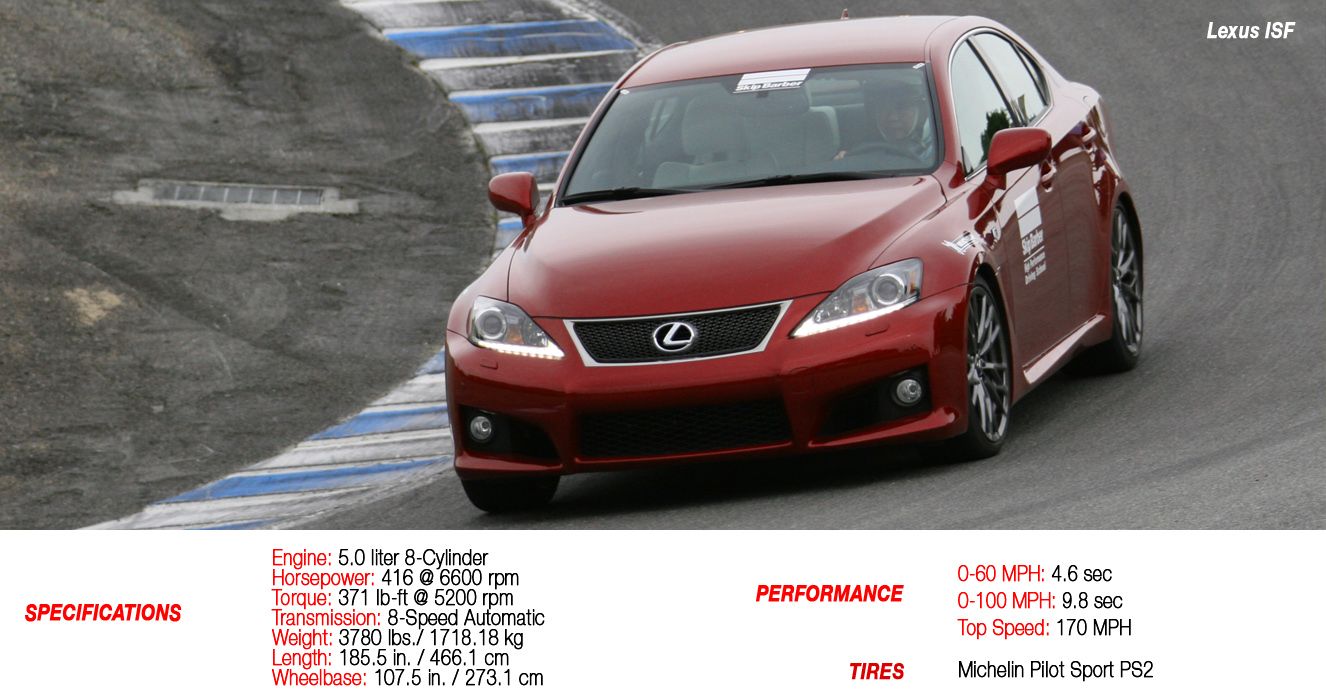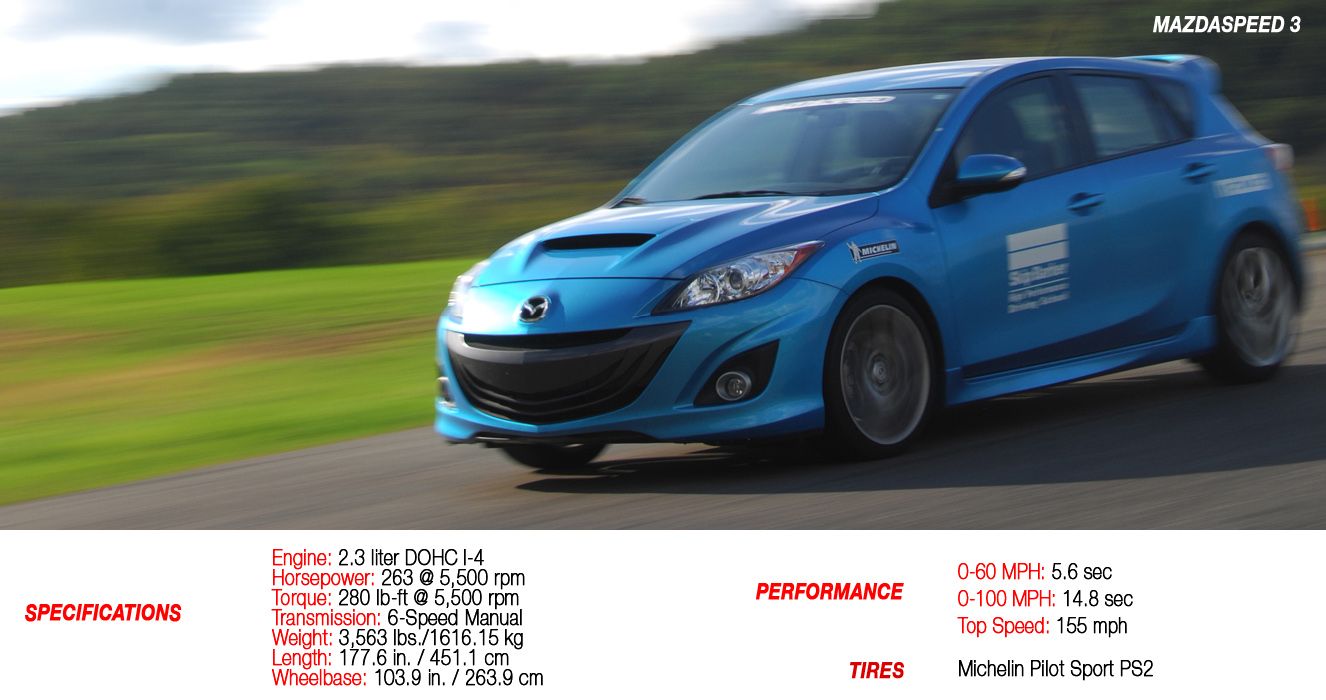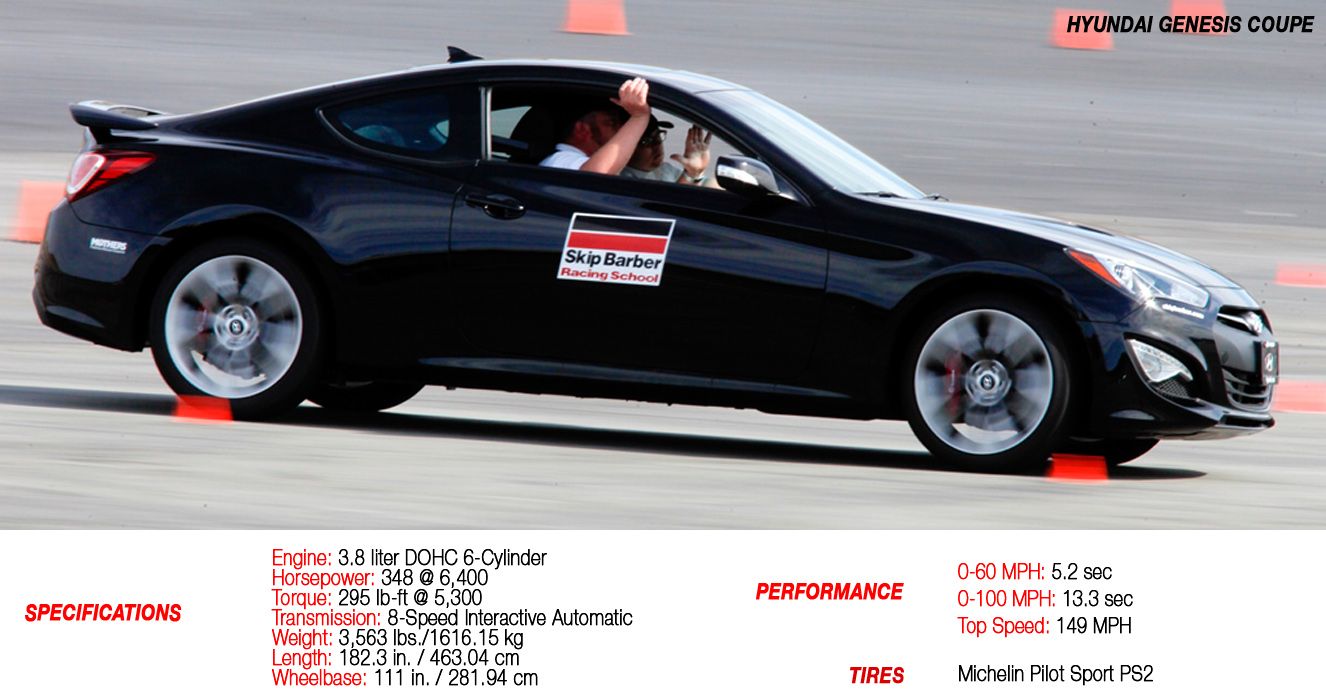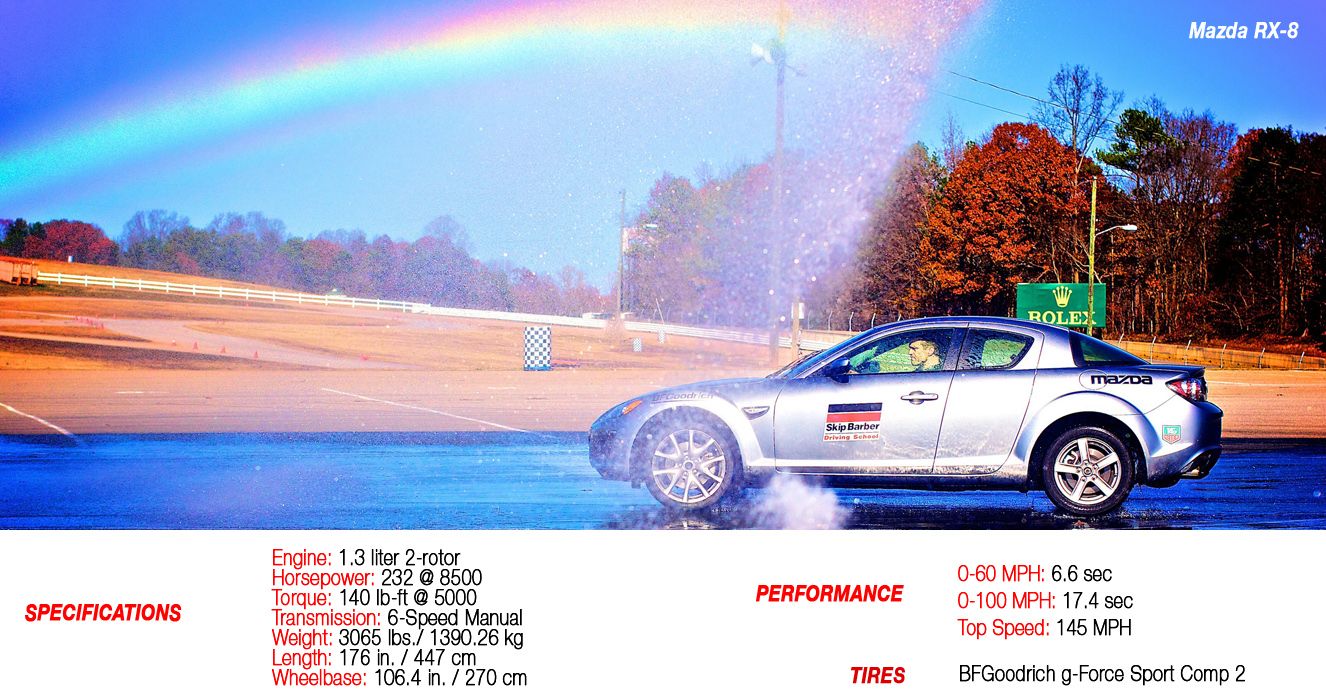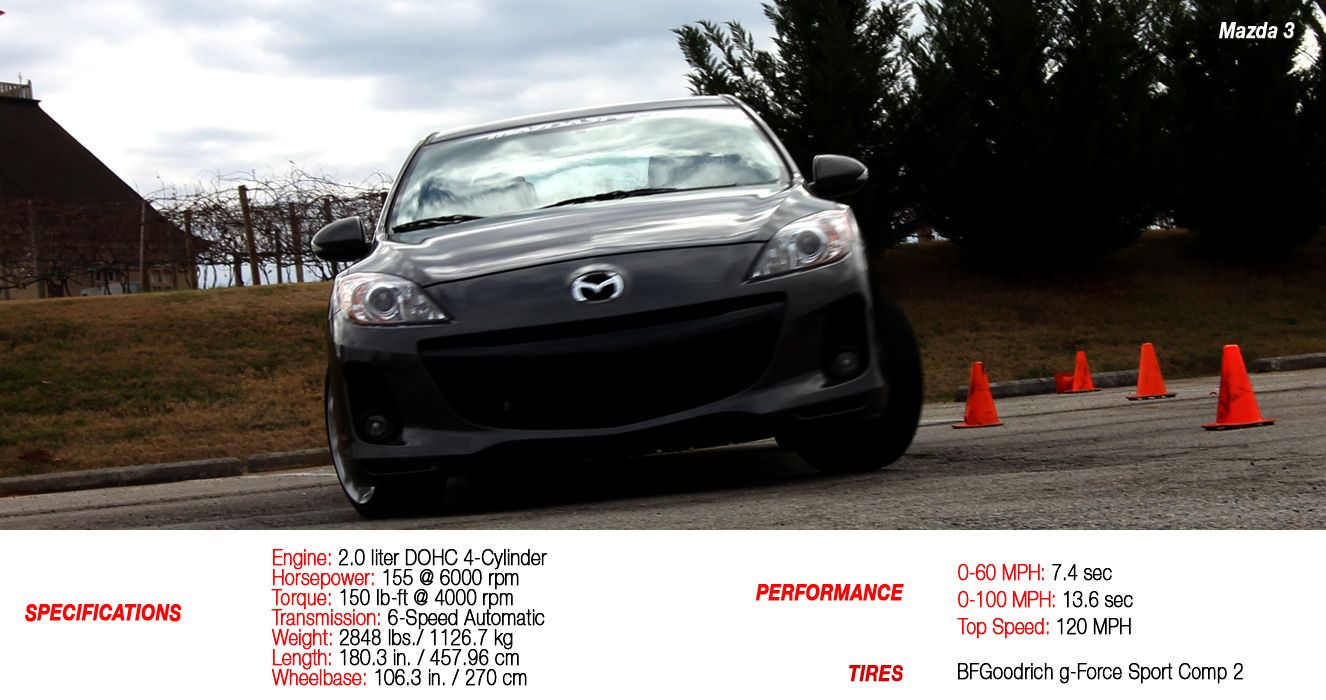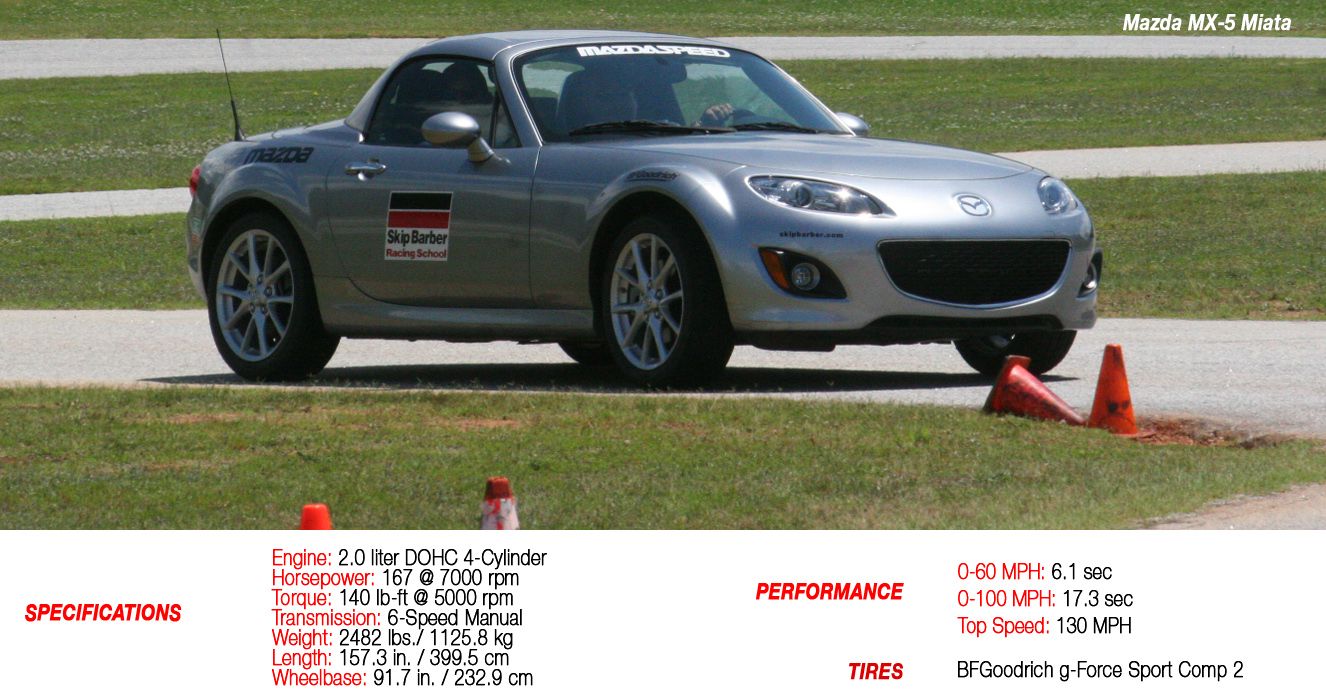In any list of ultimate dream jobs, “racecar driver” would undoubtedly take a top slot. Forget cubicles, how about going to work in a composite-lined tub flying down a track at triple-digit speeds? Like any professional athlete, practice makes perfect. Seat time is critical for the aspiring driver looking to make his or her living at the helm of a racecar.->ke148 But breaking into professional auto racing is difficult at best. The question is – where to start?
The answer is Skip Barber. For the last four decades, Skip Barber has been responsible for a variety of instructional programs in high-performance driving and racing, as well as several championship series that operate as a ladder system to help aspiring race drivers reach the pinnacle of their ability. Skip Barber graduates can be found on the podium of most major motorsports events worldwide, with a short list of famous alumni including Alex Gurney, Bill Elliot, Jeff Gordon, Juan Pablo Montoya, Michael Andretti, and Scott Speed.
If you’d prefer not to try your hand at wheel-to-wheel combat and would rather learn how to simply be a better driver, Skip Barber can help there as well. Beyond the racing school, there are several driving courses designed to help hone skills behind the wheel for every day safety and competency, no matter the road conditions.
With such a broad range of courses on the docket, Skip Barber employs a fleet of different vehicles to fit the particular task at hand, from lithe Japanese roadsters, to high-powered European sports cars,->ke506 to open-wheel formula racers. The instructors are all extremely knowledgeable, as each bring a history of professional driving experience to the table. We spoke with professional driver Grant Ryley, whose day job duties include race coach for drivers in the Pro Mazda and IMSA Lites series, driving events and vehicle launches for manufacturers like Ferrari,->ke252 Bentley,->ke15 and McLaren,->ke284 and high-performance driving for television commercials. Ryley is also a former Skip Barber instructor, with 13 years of experience at the company. During his tenure, Ryley traveled nationally as a teacher and test driver for the national race series. He’s also an alumni: “I started at Skip Barber as a student at a 3 Day Racing School, and when I left there, I was the Regional Chief Instructor.”
We asked Grant to give us the lowdown on the entire Skip Barber program, from the cars to the classes. Hit the jump to learn why Skip Barber is one of the largest racing schools on the planet.
Click past the jump to read more about the Skip Barber Racing School.
Location
Skip Barber hosts events and classes at tracks all over the U.S. These include: AutoClub Speedway, Homestead-Miami Speedway, Mazda Raceway Laguna Seca, Mosport International Raceway, NOLA Motorsports Park, Palm Beach International Raceway, Road America, Road Atlanta, Roebling Road Raceway, and Sebring International Raceway. No matter where you live, odds are there’s some kind of Skip Barber action reasonably close by.
The Cars
Formula Skip Barber
Nothing matches the exhilaration of putting an open-wheel racer through its paces on a track. The Skip Barber formula car is no different. Based on a steel space frame chassis, the car features a lightweight fiberglass body and aluminum wings in the front and rear. Mounted directly behind the driver is a 2.0-liter SOHC four-cylinder engine lifted from the Dodge Neon. With 132 horsepower and 129 pound-feet of torque, the 1,400 pound chassis can reach 60 mph from a standstill in 6.8 seconds, with a top speed of 125 mph. However, the most interesting performance you’ll wring from this workhorse is in the corners, where BFGoodrich tires offer tenacious grip and true racer handling.
Grant Ryley has extensive experience with these cars: “It’s old technology, but it’s good technology for a school car. It’s easily repairable. If you went with the ultra-modern carbon monocoque technology, when you have a big crash, you just chuck everything in the dumpster. With this car, they can replace the front clip, the rear clip… they can change everything, and it has an incredible safety record.
“The car is very hard to drive fast, which makes it a great school car. If you had a school car that was a modern street sports car, with all the driver aides they have, they’re so good the drivers don’t even know that the car is keeping the car on the track for them. It doesn’t maximize learning and it doesn’t make for a good driver. When you can drive one of cars really fast, like as fast as the car can go, you can get out there and drive just about anything. And that’s why when Skip Barber had the national series, all the kids coming out would start pretty quick, but then they’d get really fast and go to the next level and boom, there was almost no learning curve. All you’re doing is adjusting to the speed and the next level car is a better car, so it makes your job easier. The skills are there.
“A great example is a lot of modern cars have paddle shifters, and so when you’re downshifting, the car will rev match for you. The Skip Barber formula car doesn’t have anything like that. It has a sequential gearbox, it’s not an old H-pattern, but you have to blip on your downshifts, and if you don’t, the car is literally going to lock up the rear tires and spin you, so you have to learn proper footwork. I’ve had people tell me ‘Why do I need to learn how to do this, because my car blips for me.’ There’s a guy that’s a Formula 1 driver, I’ll keep him nameless, that I saw a video of. He was asked to drive a historic Lotus or something like that at Goodwood, and it was an old racecar and he was not good. His footwork was terrible, and it was just like wow, he’s a Formula 1 driver. But since those guys ascend so rapidly nowadays, he’s probably never driven a car that he had to blip on the downshifts. I think what cars do best is they teach you how to drive the right way. Almost everyone shows up thinking they’re a good driver. After their first session in the car, they’re like ‘Wow, have I got a lot to learn.’ Not about just driving this car, but just driving.”
"Mazdaspeed" MX-5
Skip Barber uses a variety of Mazdas, including this third-generation MX-5. With a 2.0-liter four-cylinder putting down 177 horsepower and 150 pound-feet of torque, performance is good enough for a 6.8 second time to sixty and 130 mph top speed. According to to Ryley, the straight-line performance figures may be close to the formula car, but this nippy roadster is certainly a bit softer: “The MX-5 is a more traditional car. Super robust, gearbox is strong, motor is strong, it can get pounded around. If I was to direct somebody, I’d direct them to the formula car. The MX-5 is a lot easier to drive. If I was going to direct someone who just wanted to do it as an experience, and do like a 3 Day School and then be done with it, the MX-5 might be your thing. The formula car might be more frustrating because it’s harder to drive.”
Porsche 911
With a 3.4-liter, flat-six engine mashing the rear end with 350 horsepower and 287 pound-feet of torque, the 911 is a common sight at track events, and for good reason. It’s perfectly engineered, well sorted, the handling is linear and predictable, and anyone pursuing at-limit driving behind the wheel will find the experience very rewarding, if done properly. Ryley puts it best: “It’s a Porsche. It’s a 911. That’s it.”
Lexus IS-F
Compared to the Mazdas, you could say the IS-F is the heavyweight of the lineup. However, with five liters of displacement creating 416 horsepower in the V-8 sitting under the hood, it’s certainly not lacking muscle. Sixty is gone in 4.6 seconds, and a top speed of 170 doesn’t seem distant either. “It’s a great car to slide,” says Ryley. “You could make a lot of tire smoke with that car.”
Mazdaspeed 3
The Mazdaspeed 3 is an oddity for Skip Barber as one of the few front-wheel-drive platforms employed at the school. Still, according to Ryley, “it’s very fast.” The 2.3-liter inline-four is torquey, with 280 pound-feet and 263 horsepower on tap. Appropriately handled, the Mazdaspeed 3 can keep up with the rear-drivers just fine.
Hyundai Genesis Coupe
Ryley didn’t get a chance to drive the Hyundai Genesis, but it certainly has all the roots of a traditional sports car. The front-engine, rear-wheel-drive layout is correct, as is the 3.8-liter V-6 making nearly 350 horsepower and 300 pound-feet of torque. The eight-speed auto slush box is particularly newbie friendly as well.
Mazda RX-8
The RX-8 is a perfect expression of the zoom-zoom concept, with rear-wheel-drive, relatively low weight, and a 1.3-liter, two-rotor engine. The handling is crisp and light, which should attract anyone interested in improving their car control skills. “If someone said ‘what is Mazda,' just show them an RX-8,” says Ryley.
Mazda3
One of the slower cars in the fleet, the Mazda3 is another front-wheel-driver with less power than the Mazdaspeed. At only 155 horsepower and 150 pound-feet of torque, sixty comes at a sluggish 7.4 seconds, but the dearth of extra pedals provided by a six-speed automatic means first-timers won’t be confused as they manage traction and power on the track. Ryley, understandably, is unimpressed: “It’s a rental car.”
Mazda MX-5 Miata
Skip Barber loves the Miata, and as such, the slightly less powerful hardtop rounds out the fleet list. However, even at a disadvantage of ten less horsepower and ten less pound-feet of torque, the hardtop sheds over 100 pounds of weight next to the convertible, which translates to seven tenths of a second quicker to 60 mph and two seconds quicker to 100 mph. All that lovely handling prowess is retained as well.
Courses
Driving School
While Ryley’s main area of expertise is in racing, he also has experience as an instructor at the driving school. His view on its importance is something we wholeheartedly agree with: “I think anybody that doesn’t send a teenager to a driving school is foolish. There’s no replacement for the accident avoidance drills, the skid pad, the threshold braking drills. You don’t do that when you learn how to drive, and I think you’re just ignorant if you don’t send your kid there. If it was up to me, it would be mandatory to get a drivers license that you had to go to one of those types of schools. The very first time that you get to threshold on the brakes shouldn’t be when you’re trying to avoid an accident on the highway. That should be the hundredth time.”
Teen Safety & Survival - $985
In this class, teenagers with at least a learner’s permit and 20 hours of driving experience get a full day of instruction and behind the wheel experience. Class time is spent reviewing the basics of vehicle dynamics, with an emphasis on “street awareness." Students are put through defensive exercises like braking, emergency lane change, slide recovery, and skid control in the MX-5, RX-8, and Mazda3. For $495, you can choose to enroll in the high capacity Teen Safety & Survival classes designed to accommodate up to 32 students.
One Day Driving School - $995
Driving School differs from the Teen Safety & Survival class in that it caters to drivers with more experience behind the wheel. However, much of the curriculum carries over, including the vehicle dynamics classroom instruction and hands-on emergency maneuver exercises. This one-day class once again employs the MX-5, RX-8, and Mazda3 for vehicle training. Upon completion, graduates are free to take one of the more advanced courses, like a One Day High Performance School or Three Day Racing School.
High Performance Racing and Driving Combo - $1,200
Taking the best of both the driving and the racing program, students of this combo course will get to experience the Porsche 911, MX-5 Cup Cars, and formula racecar, all in one class. It’s a condensed curriculum crammed into a half day of vehicle dynamics, autocross, skid pad, and track time. You might even be able to bring your own car if it passes inspection.
Racing School
1 Day Racing School/Intro To Racing - $1,795-$2,095 (varies)/$595
This is where things start to get interesting. With either the MX-5 or formula racecar as your vehicle, these programs are a great way to familiarize yourself with the essentials of race driving. Ryley recommends these courses for “someone who wants to experience but can’t afford a 3 Day School, or someone who just wants to put their toe in the water.” Students are given classroom instruction in the morning, followed by track time in the afternoon for some real racing experience pushing these cars to their limit.
3 Day Racing School - $3,495-$4,995 (varies)
The 3 Day program is the ultimate go-faster class. Skip Barber labels it as a gateway to a professional career, which is absolutely correct. With either the MX-5 Cup Car or formula racer, students are led through a curriculum that advances progressively, with both classroom instruction and on-track experience. Day 1 is the basics of race car operation and technique, like the line, downshifting, threshold braking, and cornering. This is followed by downshift exercises and lead-follow sessions. Day 2 features lapping sessions with corner instructors offering feedback to help improve overall ability, plus braking exercises. The third and final day is a focus on race craft, with starts/restarts, passing and drafting exercises, and lots of open lapping. Graduating from the 3 Day School qualifies students for an SCCA license or more advanced Skip Barber events, and as such, students include “wealthy people looking to do something different, to 14 and 15 year old go karting kids looking for a professional racing career and everything in between,” says Ryley.
2 Day Advanced Racing School - $2,695-$4,195 (varies)
“The great thing about the 2 Day Advanced is there’s a lot of track time on the second day,” says Ryley. “The first day is a bit of a refresher, second day there’s a ton of track time, and the afternoon of the second day the instructors drive with the students, which is very helpful.” The Advanced Two Day is all about making the next step towards the race series.
Advanced Car Control - $1,600
“Probably the best school that they do. It’s their best-kept secret,” says Ryley. “Nobody does those schools. The three things that hold people back driving race cars, at all levels, is first, their inability to downshift properly, and this is true at all levels. Like in Pro Mazda, all the guys I coach in the beginning, they’re good drivers, but they can’t downshift. They can’t go any faster because they can’t brake any later. The second thing is their inability to brake properly, and third thing would be car control. Advanced Car Control is all sliding, and some sliding is created through braking, and specifically brake release. It’s a great school.”
Practice Beforehand
These programs are the best that Skip Barber has to offer, and they're certainly not cheap. As such, anyone interested in attending the racing school should prepare accordingly, as outlined by Grant Ryley:
“It’s not a ‘Learn How To Drive A Manual’ school. That puts you so far behind. It’s like going to school and not speaking English. Learn how to drive a manual, borrow a friend’s, rent one. If you’re super into it and you want to go farther, I’d recommend looking at all the programs and trying to budget. You come and do the 3 Day School and you’re like ‘Oh my God, that was amazing, I have to do more than that, but I can’t afford it, and I’m going to have to wait until two years down the road.’ You need to be able to do it back-to-back-to-back. I see so many times people do a 3 Day School and then I see them 18 months or a year later and I remember them and when they left the 3 Day School, they did okay, pretty good, but they come back and they forgot everything. The muscle memory is gone now, they can’t blip on their downshifts, and that ends up being the type of thing that holds you back. Another thing, learn how to heel-and-toe downshift. Don’t wait until the second day of the school to learn how to do it. I learned to do it on a dump truck. That’s the single thing that holds people back on the last day of the school, their speed is held back by their inability to shift properly, to specifically downshift.”
Racing Series
So you went to school and you still want more. Where do you go next?
“If you want to go racing seriously, probably the best way to go,” says Ryley. “It’s not the cheapest way to go, but it’s the best way to go. And the reasoning is just the instruction. You can go SCCA racing for a lot less, buy your own car, work on it, but you’re not going to have, like at Laguna Seca, ten guys after a session come up to you saying you’re doing this wrong or you’re doing this right.”
Winter Series
The 2014/2015 Skip Barber Winter Race Series is currently underway, with events taking place at Road Atlanta, Sebring, Homestead-Miami Speedway, Roebling Road, and NOLA Motorsports Park. For formula racers, the six-weekend season will see a total $162,500 in award money up for grabs, with the top five finishers earning a spot in the 2015 Skip Barber Championship Shootout. MX-5 racers will have three race weekends to divvy up $50,000 in prize money. Pricing starts at $3,900 per weekend for the formula cars and $7,000 per weekend for the MX-5 cars.
Summer Series
The 2014 Skip Barber Summer Series has ended, with eight weekends run for the formula cars and six weekends run for the MX-5 cars. Tracks include NOLA Motorsports Park, Mazda Raceway Laguna Seca, Mid-Ohio, Lime Rock, Putnam, and Road America. $175,000 of award money was handed out per series, with pricing starting at $3,900 per weekend for both formula and MX-5 racers.
Professional Racing
This is the first rung to reach for anyone looking to land a pro ride. Known as the Mazdaspeed Pro Challenge, racers compete in MX-5 racecars for a scholarship to the Playboy Cup Series. Second place receives a full season in the Mazdaspeed Pro Challenge, while third place receives a half season. It’s a highly-competitive field, with some of the best vying for that ultimate dream of becoming a true pro race driver.
Acknowledgements
We would like to extend a special thank you to Grant Ryley for taking the time to talk to us about his experience as a former instructor at Skip Barber.
Video Gallery
Road America Skip Barber Race Series Lap
Skip Barber Racing School - Promo
Instructor Laps - Terry Earwood Drives Mid-Ohio

